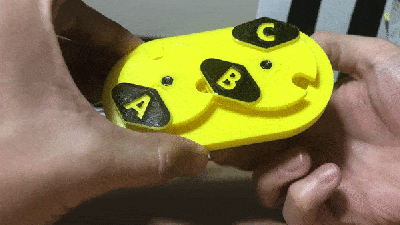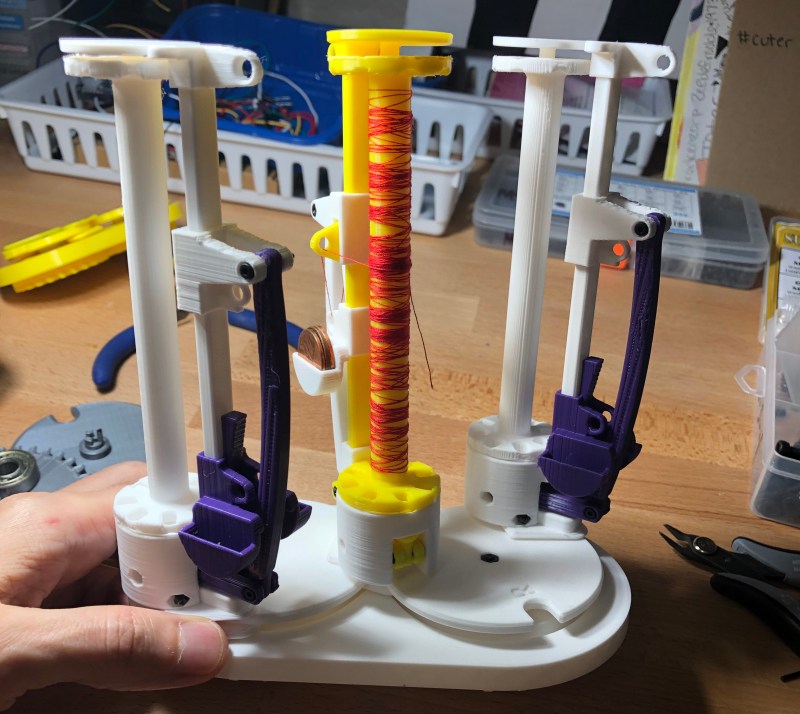A maypole braider, aka a circular braider, is a type of horn gear braider that makes braided tubes, like one of those woven finger traps or that lovely bit of gutted paracord that’s jazzing up your otherwise boring DIY USB cable. They are called so because the action mimics the motion of a group of maypole dancers bobbing and weaving around each other in an intricate choreography that results in an equally intricate pole decoration job.
 Maypole braiders like [kmatch98]’s are responsible for all kinds of ropes, cords, and other braided goods like fly-fishing lines. They use three or more bobbins, each loaded up with a single strand of yarn.
Maypole braiders like [kmatch98]’s are responsible for all kinds of ropes, cords, and other braided goods like fly-fishing lines. They use three or more bobbins, each loaded up with a single strand of yarn.
One of the most important parts of braiding anything, including hair, is maintaining tension on the braid as you go. Here, each bobbin rides inside a bobbin carrier, which performs a number of tasks — it holds the bobbin in place, releases yarn when it’s supposed to, and maintains tension on the yarn while skating a figure eight around the track.
This mesmerizing machine consists of spur gears, a frame with a figure 8 track, a pair of horn gears, and a foot — a guide on the bottom of the bobbin that rides along in the track. Early on, [kmatch98] made a fidget spinner version to visualize the basic function. He studied pictures of commercial bobbin carriers and managed to not only reverse engineer them, but improve the design by eliminating one of the two springs and replacing it with gravity. The remaining spring is used for the bobbin release.
Surprisingly, this isn’t the first plastic braiding machine we’ve featured. Here’s one made of freakin’ LEGO.

















I was unable to see how a cable or other thing-to-be-braided could pass through this mechanism, so I googled maypole braiders and I see that a complete braiding machine would need not just two gears, but several sets of two (I guess maybe 3 sets minimum?) in order to form a ring around the cable. This is also how you achieve having one set of bobbins circle in one direction while another set circles in the opposite direction.
@ CityZen said: “…braiding machine would need not just two gears, but several sets of two (I guess maybe 3 sets minimum?) in order to form a ring around the cable.”
Three minimum:
Design Secrets of the Manual Braiding Machine
https://www.youtube.com/watch?v=2qNHajHHMY8
https://www.youtube.com/watch?v=2qNHajHHMY8
That’s a strange example video to use, as it’s twisting rather than braiding (the narrator confirms that 0:22)
@poiuyt said: “That’s a strange example video to use, as it’s twisting rather than braiding (the narrator confirms that 0:22)”
Yup, you are right, my bad. Thanks for pointing this out. I would pull or edit my erroneous post if it was possible – but it is not allowed here.
One or two threads cannot braid, three threads minimum are needed to braid. One or two threads can twist or wrap only. Of course when it comes to braiding, more threads means more fun:
https://www.youtube.com/watch?v=8jEzBfp_d1I
https://www.youtube.com/watch?v=8jEzBfp_d1I